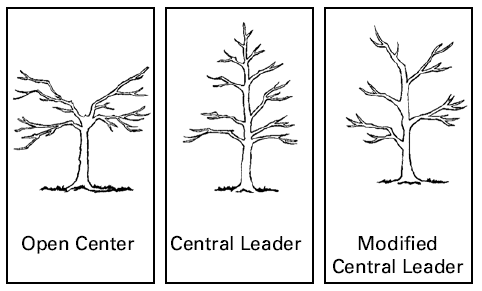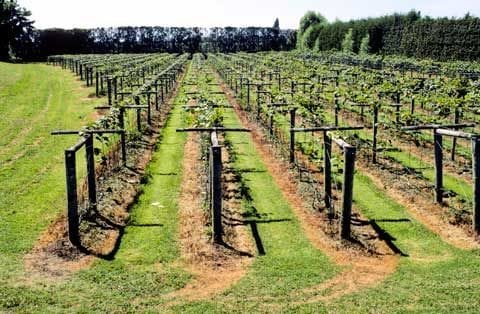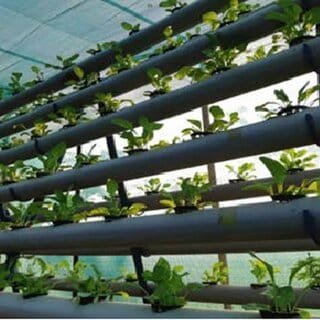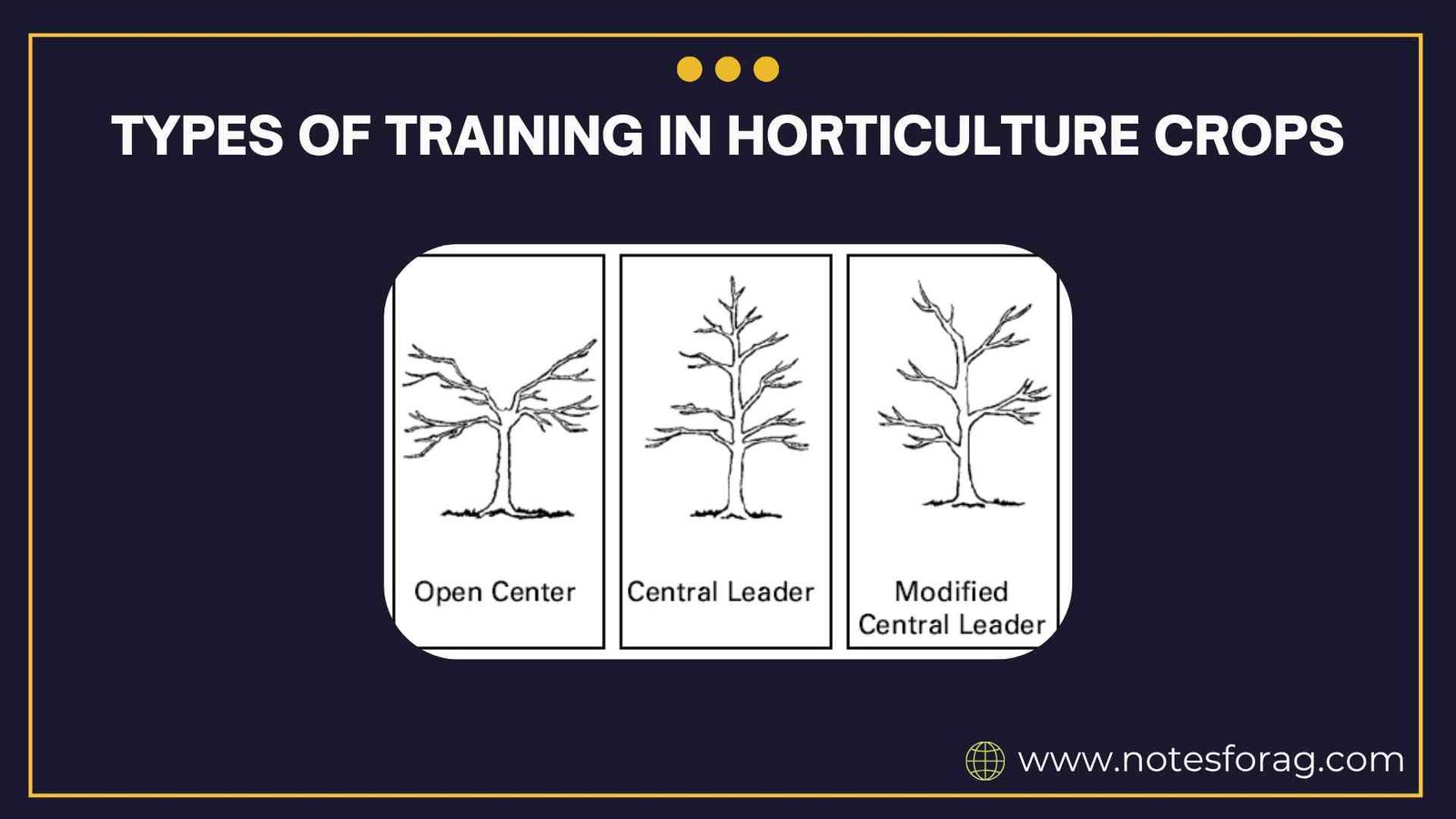INTRODUCTION
Training in horticulture refers to the practice of modifying the growth and form of plants to improve their productivity, health, and appearance. It is mainly done in fruit crops to direct plant growth, expose more leaves to sunlight, encourage the development of strong branches, and facilitate easier cultural operations like spraying and harvesting. The process includes guiding the plant’s structure by removing, bending, or tying shoots, branches, or stems during its early growth stages. Training is essential for maintaining plant architecture, ensuring better air circulation and light penetration, reducing disease incidence, and ultimately enhancing both yield and fruit quality.
Summary of Training in horticulture crops
- Training in horticulture shapes plant growth using systems like central leader, open center, cordon, espalier, and pergola to optimize structure, light exposure, and ease of management.
- Choosing a system depends on plant type, space, climatic conditions, and purpose, balancing production goals, aesthetics, and labor efficiency.
- Proper training improves air circulation, disease resistance, pruning and harvesting ease, and supports high-density planting while enhancing yield and plant health.
Table of Contents
OBJECTIVES OF TRAINING IN HORTICULTURE CROPS
The objectives of training in horticulture crops,
- To provide desirable shape and structure to the plant.
- To facilitate intercultural operations such as irrigation, spraying, harvesting, and pruning.
- To improve light distribution within the plant canopy for enhanced photosynthesis.
- To eliminate weak, diseased, or crisscross branches and encourage healthy branch development.
- To manage plant height and spread effectively for better orchard management.
CLASSIFICATION OF TRAINING IN HORTICULTURE CROPS
Training in horticultural crops vary based on the plant species, growth habit, climatic conditions, and orchard management goals. Common types include:

1. CENTRAL LEADER SYSTEM
In this system, the plant is allowed to grow with one main upright stem or trunk known as the leader, from which all lateral branches emerge. It is commonly used for apple, pear, and cherry trees.
This system creates a strong framework, promotes good light distribution, and makes the tree wind-resistant. However, the tree may grow too tall if not controlled.
2. MODIFIED CENTRAL LEADER SYSTEM
This is a variation of the central leader system where the main stem is allowed to grow for a few years and then headed back to promote the growth of lateral branches. It is widely adopted in apple and peach trees.
The system combines the strength of the central leader with a lower, more spread-out canopy structure, offering easier maintenance and harvesting.
3. OPEN CENTER OR VASE SYSTEM
In this system, the central stem is cut back early to encourage the growth of 3–5 main scaffold branches from the lower part of the stem, giving a vase-like shape.
It is suitable for peaches, apricots, and plums. The open center allows maximum sunlight to penetrate into the canopy, reducing disease incidence and improving fruit coloration.
4. CORDON SYSTEM
The cordon system involves training plants along a single wire or trellis in a horizontal or angled manner. It is commonly used for grapevines and passion fruit.
The plant is restricted to one or two stems (cordons) that bear short fruiting spurs. This system simplifies pruning and harvesting and supports high-density planting.
5. ESPALIER SYSTEM
Espalier training involves training the plant flat against a wall or trellis in decorative patterns. It is practiced for both aesthetic and functional purposes.
Fruit trees such as apples and pears are often trained in this way in limited spaces. It enhances sunlight exposure and can be used to create garden partitions.
6. T-BAR SYSTEM

The T-bar system consists of vertical poles with a crossbar at the top, supporting horizontal wires on which vines or branches are tied. This system is commonly used in kiwifruit and grapevines.
It improves air circulation, makes fruit harvesting easier, and increases exposure to sunlight.
7. PERGOLA OR ARBOR SYSTEM
In this system, plants are trained over a horizontal structure supported by vertical poles. Commonly used for grapes and cucurbits, this method provides excellent light exposure and is suited for vigorous climbing crops.
The pergola system improves fruit quality by preventing fruit contact with the soil and allows for better pest and disease control.
8. HEDGE OR MEADOW SYSTEM
This system trains plants into a compact hedge or wall-like structure and is often used in high-density planting.
It facilitates mechanized pruning, spraying, and harvesting. Guava, apple, and citrus are trained in this manner for commercial production.
9. PYRAMIDAL SYSTEM

The pyramidal training system is a variation of the central leader method where the plant takes on a pyramid shape, wider at the base and narrower at the top. It is used in dwarf apple varieties.
This shape ensures even light distribution and supports a compact growth habit.
10. BOWER SYSTEM
This system uses a horizontal trellis supported by vertical poles, often seen in the cultivation of gourds, cucumbers, and bitter gourd.
The vines are trained to grow over the bower, keeping fruits off the ground and facilitating uniform growth and harvesting.
SELECTION OF TRAINING SYSTEM
The selection depends on several factors:
- Nature and growth habit of the crop
- Climatic conditions
- Purpose (commercial, aesthetic, or experimental)
- Availability of space and labor
- Pest and disease control requirements
BENEFITS OF TRAINING IN HORTICULTURE
The benefits of training in horticulture,
- Improves light interception and photosynthetic efficiency
- Enhances air circulation and reduces disease incidence
- Promotes uniform fruiting and quality produce
- Makes cultural operations like spraying and harvesting easier
- Allows high-density planting and better land utilization
- Controls plant size and shape for aesthetic or production goals
CONCLUSION
Training is a fundamental horticultural practice that influences the shape, productivity, and health of plants. Choosing the right training system based on crop type and purpose is crucial for effective orchard management. Well-trained plants offer numerous benefits, including improved yield, fruit quality, pest and disease resistance, and operational ease. Understanding and implementing appropriate training techniques help create efficient, productive, and aesthetically pleasing orchards and gardens.
Frequently Asked Questions (FAQs)
What is the central leader training system in horticulture?
The central leader system features one main upright stem with lateral branches, commonly used in apple and pear trees to promote a strong framework and improve light distribution.
How does an open center (vase) training system benefit fruit trees?
An open center training system encourages several scaffold branches while removing the central leader, forming a vase shape that enhances sunlight penetration, air circulation, and easier maintenance .
What is a cordon training system and where is it used?
The cordon system trains one or two horizontal stems along wires or trellises, ideal for grapevines and passion fruit, allowing high-density planting and simplifying pruning and harvesting.
Related Articles

